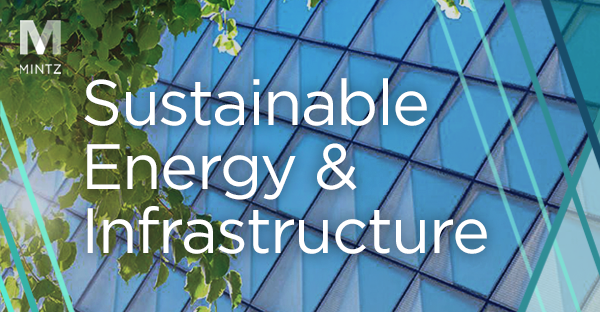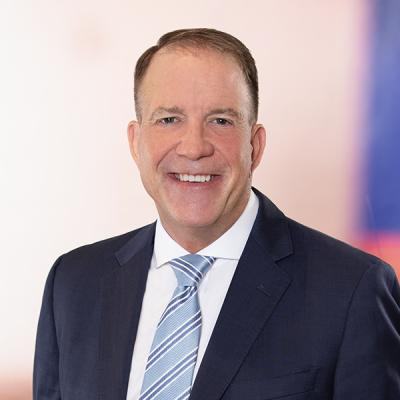Energy & Sustainability Washington Update — December 2024
Coming up on a month since the presidential election, some things are starting to become clearer, though many questions remain. We will release a Viewpoints article in the next week that will be a more in-depth assessment of the implications of what is known about both the incoming Trump administration and congressional priorities. So, be sure to keep an eye out! In the meantime, we wanted to highlight some new energy-related programs and announcements from the Department of Energy (DOE), Environmental Protection Agency (EPA), and other agencies, building off the views in our November update.
Trump’s Cabinet Picks
President-elect Trump has named Chris Wright, currently CEO of Liberty Energy, an energy services company headquartered in Denver, as his nominee for Secretary of Energy. Wright’s announcement led many to view a video posted on LinkedIn where he pushed back hard against language about an “energy transition,” “clean energy,” “carbon pollution,” and a “climate crisis,” certainly in line with rhetoric from Trump and other Republicans. Wright’s actual positions may be more nuanced, however, given Liberty’s investment in Fervo, an advanced geothermal company, and Wright’s position as a board member on Oklo, a small modular nuclear company. He has also expressed support for the federal government’s role in energy research, which aligns directly with one of the DOE’s main missions.
Wright joins Doug Burgum, who has been named to lead the Department of Interior, and who, like Wright, was formally a CEO, which will provide valuable management skills and pro-business pragmatism to both positions. Burgum will also chair the National Energy Council, which Trump states will coordinate energy policies across agencies, 14 energy-producing states, and two Canadian provinces to promote oil and gas drilling. Also joining Burgum on the Council is Lee Zeldin, who was named as Administrator of the Environmental Protection Agency (EPA). Zeldin formerly represented New York’s First Congressional District from 2015 – 2023 and was a member of the Conservative Climate Caucus during his tenure. The three are expected to move briskly through confirmation.
Agency Actions
- Clean Industrial Sector: On November 18, 2024, at the United Nations Climate Summit known as COP29, the DOE, and White House Office of Science and Technology Policy (OSTP) released a blueprint for a clean and competitive industrial sector, focusing on the following five strategies: accelerating the deployment of commercially available, cost-effective lower carbon solutions in the near term; demonstrating emerging solutions at commercial scale to de-risk deployment; increasing data use to drive emissions reductions and efficiency gains; innovating and advancing research to develop transformative processes and products for deep GHG emissions reductions; and integrating across the product life cycle to reduce embodied GHG emissions in industrial products and minimize waste.
- LNG Export Pause: On November 7, 2024, the Biden administration announced it plans to publish its draft study on the impact of domestic natural gas production on climate change, national security, and economics by the end of the month. Publication of this study would be followed by a 60-day comment period. If the final version of the study is completed before President-elect Trump takes office, the finding could put information on the record that conflicts with the anticipated effort to rapidly approve more gas export facilities and reverse the current liquified natural gas export pause.
- NOx Standards: On November 22, 2024, EPA released a proposed rule that significantly strengthens the standards covering nitrogen oxides (NOx) pollution from new gas turbines. These standards have not been updated since 2006. EPA’s update would require most new turbines to install a type of pollution control equipment known as post-combustion selective catalytic reduction, or SCR, to limit NOx emissions. The rule would also create new subcategories of turbines based on size and expected capacity factor while also noting whether the turbine will burn natural gas or other fuels, such as hydrogen. A final decision on the rule will be left to the incoming Trump administration, but EPA is under a court-ordered deadline to finish this rulemaking next year. EPA said it will not reduce current limits on sulfur dioxide.
- Methane: On November 12, 2024, the EPA finalized its rule to reduce methane and gas emissions from the oil and gas sector. The rule facilitates implementation of Congress’s directive in the Inflation Reduction Act to collect a Waste Emissions Charge. Companies that emit methane at levels equivalent to 25,000 metric tons of carbon dioxide each year must pay $900 per metric ton this year, $1,200 per metric ton the next year, and $1,500 per metric ton the following year. The next day, DOE and EPA co-signed a letter to the EU Commission Director-General congratulating the recent adoption of the EU Regulation on methane emissions reduction and urging an initiation of an equivalence determination process for importers/third countries. Despite these recent efforts to curb methane however, the incoming chair of the Senate Environmental and Public Works Committee, Senator Shelly Moore Capito (R-WV), recently stated in an interview that she will prioritize using the Congressional Review Act to reconcile and repeal the EPA’s final methane emissions rule.
- Nuclear: On November 12, 2024, DOE reaffirmed its commitment to triple nuclear energy capacity by 2050 by adding 35 gigawatts (GW) of new capacity by 2035 and achieving a sustained pace of 15 GW per year by 2040. These goals were set out in new deployment targets established at COP29. The commitment suggested an all-of-the-above strategy for embracing nuclear technologies from large-scale light-water reactors to small-modular and microreactors. DOE stated that this can be achieved via new infrastructure, supply chains, and fuel cycles, placing an emphasis on streamlining regulatory processes and reducing dependencies on Russia for enriched uranium. Earlier this month, the US and the Republic of Korea also signed a memorandum of understanding (MOU) to advance cooperation on civil nuclear energy. The two countries reaffirmed their adherence to standards regarding nonproliferation, safety, safeguards, and security. They strengthened their administration of export controls around these technologies and sought to expand work around climate change, energy transitions, and critical supply chains. The MOU will proceed for final review in both countries’ capitals.
- PFAS: On November 20, 2024, The EPA announced a new, “no-cost,” technical assistance initiative focused on reducing exposure to PFAS and other emerging contaminants in small or disadvantaged communities. The Tackling Emerging Contaminants Water Technical Assistance initiative is funded by the Bipartisan Infrastructure Law and will help public drinking water systems evaluate contaminant issues, conduct initial testing, and identify next steps in 200 communities over the next three years.
- Sustainable Aviation Fuel: On November 20, 2024, the interagency team led by the DOE, USDA, and FAA released its updated Sustainable Aviation Fuel (SAF) Grand Challenge Roadmap Implementation Framework. The Framework identifies existing gaps in agency capabilities where additional effort, public-private partnerships, and support appear necessary. The announcement emphasizes the dramatic increase in SAF production since the inception of the SAF Grand Challenge. The SAF Grand Challenge team remains committed to the following objectives: supporting continued R&D, supporting American farmers with climate-smart practices, providing loan guarantees to commercial-scale SAF projects, and providing capabilities and funding to support SAF qualification and standard setting.
Legislative Developments
On November 14, 2024, the House passed Republican legislation on critical minerals and geothermal energy with the support of Democrats. The chamber voted 245-155 for the Critical Mineral Consistency Act, sponsored by Rep. Juan Ciscomani (R-AZ), which would combine the Department of Energy’s list of critical materials with the US Geological Survey’s (USGS) own roster to reduce confusion between the lists and give both the same energy-related benefits. For example, the USGS minerals are eligible for more extensive clean energy tax credits and financing support than those on the DOE’s list. Proponents of the bill claim that combining the lists helps streamline the permitting process for critical mineral mining projects, including copper. Senators Kyrsten Sinema (I-AZ) and Mike Lee (R-UT) introduced a companion bill in the Senate, but the bill is unlikely to make any progress during the congressional lame-duck period.
In addition, the House voted 225-181 to pass Rep. Young Kim’s (R-CA) Harnessing Energy At Thermal Sources (HEATS) Act, which would speed up the permitting process for geothermal energy by waiving the requirement for operators to obtain a federal drilling permit for wells on state and private lands. The House then passed Bruce Westerman’s (R-AK) Committing Leases for Energy Access Now (CLEAN) Act, which amends the Geothermal Steam Act of 1970 to require the Secretary of the Interior to hold annual lease sales for geothermal energy. Although both bills are also unlikely to make any additional progress during the congressional lame-duck period, their passing indicates that geothermal will likely be a bipartisan priority next Congress.
Finally, Senators Michael Bennet (D-CO) and Lisa Murkowski (R-AK) introduced a bill that would create a technology-neutral tax credit for carbon dioxide removal (CDR) technologies under section 45BB. The announcement emphasizes the criticality of CDR tech to meeting climate goals and the relevance of tax credits in the climate space. The bill has received endorsements from leaders at the Bipartisan Policy Center, Carbon Removal Alliance, National Wildlife Federation, World Resources Institute, and ClearPath Action.
Requests for Information (RFI)
OCED Seeks Public Input on Approaches to Catalyze Direct Air Capture Technology Commercialization (10/29/2024)
The DOE’s Office of Clean Energy Demonstrations issued an RFI for input regarding approaches to help direct air capture (DAC) tech developers address investment capital and operational sustainability challenges. The request will inform the Regional DAC Hubs program and advance an understanding of how federal funding could complement existing DOE efforts around Regional DAC Hubs. This RFI follows the selection of 21 projects for award negotiations out of an August 2023 FOA and a September 2024 Notice of Intent (NOI) on the next round of funding for the Regional DAC Hubs program (expected winter 2024).
- The response deadline for the RFI is December 17, 2024, at 5:00 pm.
- The OCED eXCHANGE listing for this RFI can be found here.
Notice of Intents (NOI)
The DOE put out an NOI that seeks to fund development, testing, and analysis to compile expansive data sets to minimize the cost of carbon capture and storage (CCS) systems. Without this data, deployments of CCS technology tend to be expensive, making it less commercially scalable. The announcement reaffirms the department’s commitment to CCS, with the intent of significantly reducing domestic and global CO2 emissions. The notice includes five areas of interest:
- Engineering-Scale Testing of Transformational Carbon Capture Technologies at Natural Gas Power Generation and Industrial Facilities
- Enabling Technologies for Carbon Capture Systems
- Testing of Low-Cost, High Capture Efficiency, Flexible Capture Systems for Electricity Generation and Industrial Facilities
- Preliminary Front-End Engineering Design Studies (pre-FEED) for Flexible Carbon Management Systems
- FEEDs for Oxygen-Driven (Chemical Looping/Oxy-Combustion) Hydrogen Production Pre-Commercial Pilot Scale Systems.
Funding Opportunity Announcements
US Department of Energy Announces $36 Million to Unlock Critical Resources from Wastewater (11/21/2024)
The DOE Advanced Research Projects Agency-Energy (ARPA-E) announced a funding opportunity for its Realize Energy-rich Compound Opportunities Valorizing Extraction from Refuse waters (RECOVER) program. The program seeks to retrieve high-value minerals from municipal, agricultural, and industrial wastewater, opening new domestic supply chains for critical materials such as ammonia. This program recognizes the high import reliance of the US on foreign critical minerals and observes that waste streams are a largely untapped resource. The RECOVER program includes three technical categories: (1) new materials, (2) process development and derisking, and (3) process integration.
- The submission deadline for Concept Papers is Dec. 31, 2024, at 9:30 am.
- Additional information on this funding opportunity can be found here.
US Department of Energy Issues New Funding Opportunity to Develop HALEU Transportation Packages (11/19/2024)
The DOE Office of Nuclear Energy announced a funding opportunity of up to $16 million for projects, which will research, develop, and acquire Nuclear Regulatory Commission (NRC) licensing for long-term economical solutions for the transportation of HALEU through the development of new transportation packages or the modification of existing packages. HALEU will be critical to next-gen nuclear reactor technology since limited options exist for its transport today. The two topic areas are (1) NRC certification applications for new package design concepts and (2) NRC certification applications for modifications to existing design packages.
- Topic Area 1 will have a performance period of up to three years, while Area 2 will have a performance period of up to two years.
- The award ceiling for this funding opportunity is $6 million.
- Applications are due by Jan. 21, 2025, at 5:00 pm.
- Additional information on this funding opportunity can be found here.
US Department of Energy Announces $38 Million to Develop Next-Generation Transmission Infrastructure (11/7/2024)
ARPA-E announced $38 million for its Disruptive DC Converters for Grid Resilient Infrastructure to Deliver Sustainable Energy Program (DC-GRIDS), which seeks to fund projects that focus on novel modular high-voltage power electronic valves and technology to enable highly compact MT-HVDC converter stations. The goal of DC-GRIDS is to enable the rapid expansion of the grid’s capacity by making HVDC transmission systems cost-comparable with conventional AC technology. The program also aims to enable true multi-directional power routing with flexible interconnections between new and existing AC and direct current (DC) lines, making integration of sustainable energy sources faster and easier. The program will focus on two technical categories: (1) “Novel submodules and modular high-voltage power electronic valves” and (2) “Technologies that enable highly compact multi-terminal converter stations.”
- The ARPA-E eXCHANGE details for this FOA can be found here.
- The DC-GRIDS Concept Paper Notice of Funding Opportunity (NOFO) can be found here.
- The submission deadline for Concept Papers is December 10, 2024, at 9:30 am ET.
Biden-Harris Administration Announces $10M for States and Tribes to Accelerate Transmission Across the Country (10/31/2024)
The DOE’s Grid Deployment Office announced $10 million in funding for states, tribes, and nonprofit organizations through its Transmission Acceleration Grants (TAG) Program. The program aims to support capacity building, transmission planning, and siting and permitting process reforms, especially when observing widespread project backlogs due to transmission obstacles. Some of the listed eligible activities include identifying preferred locations for transmission infrastructure, developing new transmission-focused governmental organizations, and establishing state- or tribal-based funding or financing programs for transmission facilities. The technical assistance partnerships under the TAG Program will be managed by TECHWERX, which the DOE has a partnership with.
- The submission deadline for the first round of TAG funding is January 21, 2025, by 5:00 pm.




